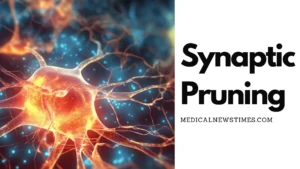Introduction
Synaptic pruning is a fascinating biological process that occurs in the brain, shaping our neural connections and ultimately influencing our behavior and cognition. Understanding the definition, process, and potential uses of synaptic pruning can provide insights into various neurological disorders, such as schizophrenia and autism. In this article, we will explore the intricacies of synaptic pruning and uncover its role in both the healthy and diseased brain.

Definition
Synaptic pruning, also known as synaptic elimination or synaptic refinement, refers to the process by which unnecessary synaptic connections in the brain are selectively eliminated. During early brain development, there is an overproduction of neural connections or synapses. However, as we grow and mature, these excess synapses undergo a pruning process, ensuring the brain’s neural circuitry becomes more efficient.
How does it work?
The process of synaptic pruning involves the elimination or reduction of weak or unused synapses while strengthening the important connections. This process is controlled by various factors, including neuronal activity, the release of certain proteins, and the action of glial cells. Glial cells, such as microglia, play a crucial role in identifying and engulfing the synapses that are no longer needed, allowing the brain to refine its neural connections and optimize its functionality.
When does it occur?
Synaptic pruning is most active during early brain development, particularly during childhood and adolescence. The brain goes through a period of intense pruning, gradually optimizing its neural connections. This process continues until early adulthood when the brain reaches its peak level of synaptic pruning. However, it is important to note that synaptic pruning does not completely cease in adulthood. Some level of pruning continues throughout our lives, allowing the brain to adapt and modify its connections based on new experiences and learning.
Schizophrenia
Schizophrenia is a complex mental disorder characterized by a disconnect between thoughts, emotions, and behavior. Researchers have found evidence suggesting that synaptic pruning abnormalities might contribute to the development of schizophrenia. Studies have shown that individuals with schizophrenia exhibit excessive synaptic pruning, leading to a reduction in neural connectivity. These alterations in synaptic pruning can disrupt the balance between excitatory and inhibitory synapses, potentially impacting cognitive functions and contributing to the symptoms seen in schizophrenia.
Autism
On the other end of the spectrum, autism spectrum disorder (ASD) is a neurodevelopmental condition associated with difficulties in social interaction, communication, and repetitive behaviors. Research has shown that individuals with autism may exhibit abnormalities in synaptic pruning. Specifically, there may be an imbalance between excessive pruning and inadequate pruning, resulting in atypical connectivity patterns in the brain. These disruptions in synaptic pruning could underlie some of the characteristic features of autism, highlighting the importance of studying this process to better understand and treat the disorder.
Summary
Synaptic pruning is a dynamic process that occurs in the brain, selectively eliminating unnecessary synaptic connections to optimize neural circuits. It is most active during early brain development but continues throughout life to accommodate new experiences and learning. Abnormalities in synaptic pruning have been implicated in neurological disorders such as schizophrenia and autism, demonstrating the significance of studying this process for potential therapeutic interventions in the future. By unraveling the complexities of synaptic pruning, we can gain valuable insights into the functioning of the brain and pave the way for a deeper understanding of the intricate workings of our mind.